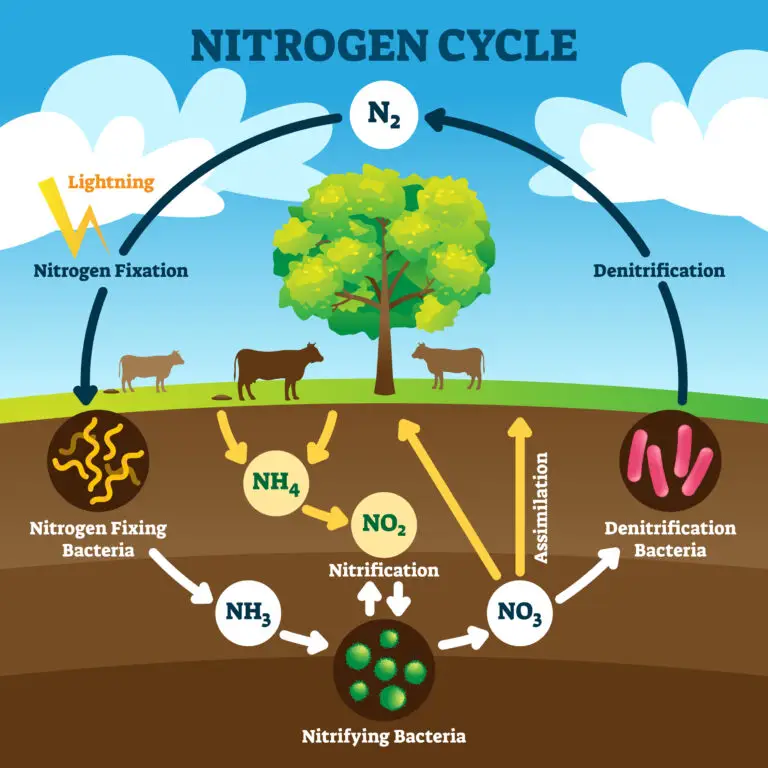Nitrogen Cycle

Table of Contents
What is the Nitrogen Cycle?
The nitrogen cycle is a crucial biogeochemical process that describes the movement and transformation of nitrogen in various forms within ecosystems. Nitrogen is an essential element for living organisms, and the nitrogen cycle facilitates the conversion of nitrogen between different chemical forms that can be utilized by plants, animals, and microorganisms. The nitrogen cycle involves several key processes, each driven by specific groups of microorganisms.
Processes in the Nitrogen Cycle
Nitrogen Fixation
Nitrogen gas (N₂) makes up the majority of the Earth’s atmosphere, but most organisms cannot use it directly. Nitrogen fixation is the process by which certain bacteria, known as nitrogen-fixing bacteria, convert atmospheric nitrogen into ammonia (NH₃) or related compounds. These bacteria can be free-living in the soil or form symbiotic relationships with plants, such as legumes.
Nitrification
Nitrification is a two-step process carried out by specific groups of bacteria:
- Ammonia to Nitrite (Nitrosomonas): Ammonia (NH₃) is converted to nitrite (NO₂⁻) by bacteria called Nitrosomonas.
- Nitrite to Nitrate (Nitrobacter): Nitrite is further oxidized to nitrate (NO₃⁻) by bacteria such as Nitrobacter. Nitrate is a more stable and less toxic form of nitrogen that plants can readily take up.
Assimilation
Assimilation involves the uptake of nitrogen compounds by plants and other organisms to build essential biomolecules, such as proteins and nucleic acids. Plants primarily absorb nitrogen in the form of nitrate or ammonium from the soil.
Ammonification
Ammonification is the process by which organic nitrogen compounds (e.g., proteins and nucleic acids) from dead organisms and waste products are broken down by decomposer bacteria and fungi into ammonia (NH₃) or ammonium ions (NH₄⁺).
Denitrification
Denitrification is the conversion of nitrates (NO₃⁻) or nitrites (NO₂⁻) back into nitrogen gas (N₂) or nitrous oxide (N₂O) by denitrifying bacteria. This process returns nitrogen to the atmosphere, completing the nitrogen cycle.
Players in the Nitrogen Cycle
Nitrogen-Fixing Bacteria:
- Bacteria such as Rhizobium form symbiotic relationships with leguminous plants, providing them with fixed nitrogen in exchange for carbohydrates produced by the plant. Free-living nitrogen-fixing bacteria, such as Azotobacter, contribute to nitrogen fixation in the soil.
Nitrifying Bacteria:
- Nitrosomonas and Nitrobacter are key nitrifying bacteria responsible for the conversion of ammonia to nitrite and then to nitrate, respectively.
Decomposers:
- Decomposer organisms, including bacteria and fungi, play a vital role in ammonification by breaking down organic nitrogen compounds in dead organisms and organic matter.
Denitrifying Bacteria:
- Denitrifying bacteria, such as Pseudomonas, perform denitrification, converting nitrates or nitrites into nitrogen gas or nitrous oxide.
Related Links
Decomposer
Inorganic
Molecule
Urea